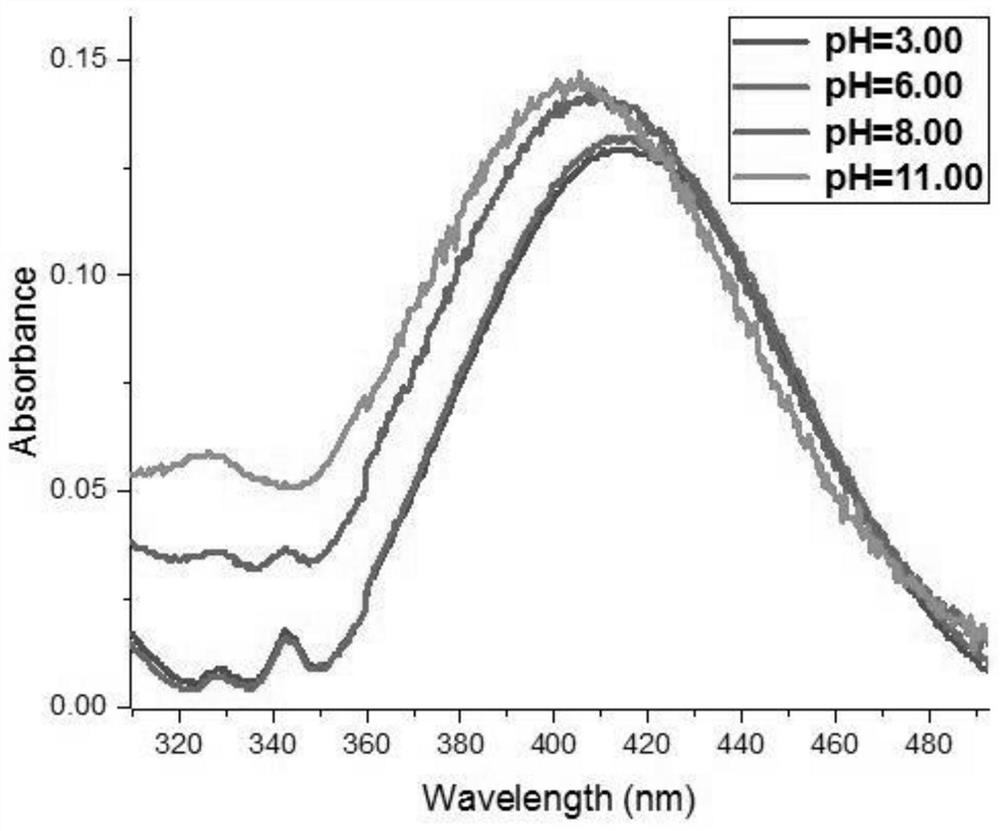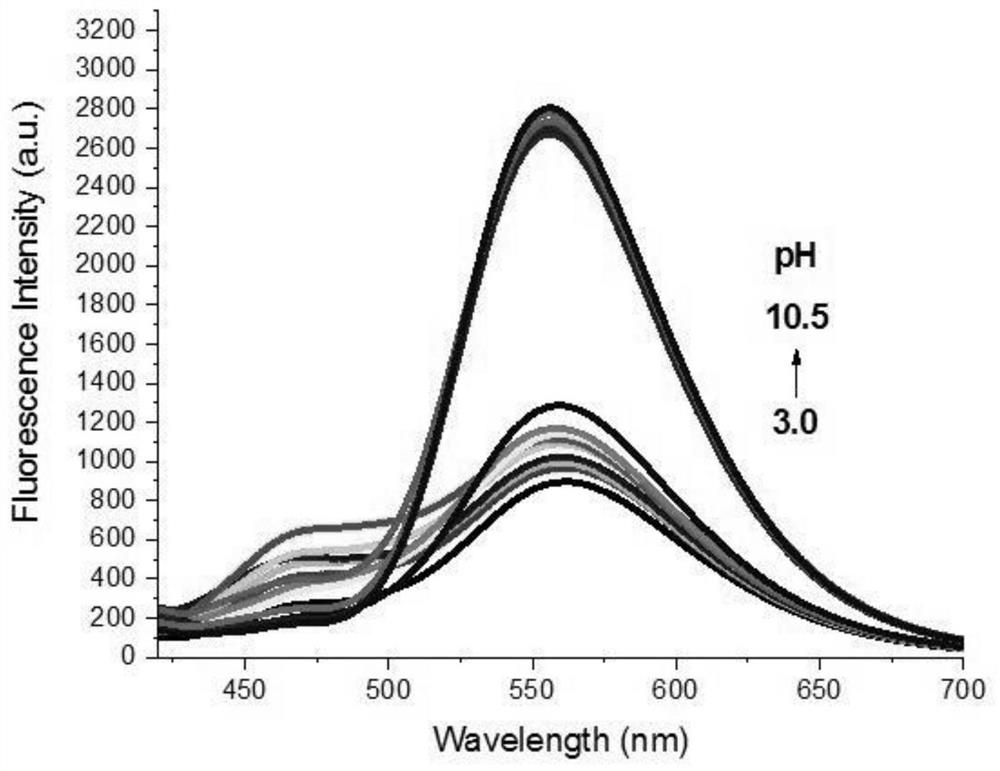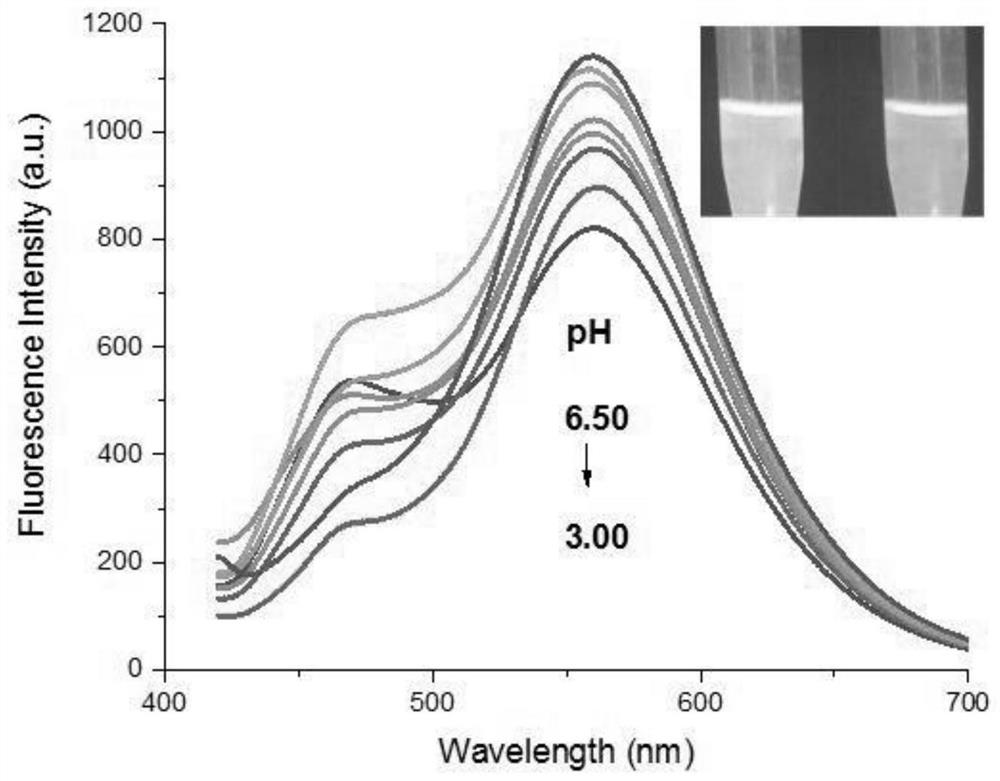A kind of fluorescent probe for pH detection, its synthesis method and application
A fluorescent probe and imaging technology, which is applied in the field of fluorescent probes for pH detection, can solve the problems of lack of effective means for pH, and achieve good selectivity, high sensitivity, and easy purification
- Summary
- Abstract
- Description
- Claims
- Application Information
AI Technical Summary
Problems solved by technology
Method used
Image
Examples
experiment example 1
[0037] Experimental example 1 (ultraviolet spectrum):
[0038] Acid-base titrations were performed systematically in PBS buffer-DMSO solution. The NDI sample was dissolved in PBS buffer: in a solution with a volume ratio of 4:1 of DMSO, and measured after standing for 30 min, as figure 1 As shown, there is a maximum absorption peak at 415nm and a side peak at 345nm under acidic conditions (pH 6). When the pH value gradually changed from 6.00 to 11.00, the maximum absorption peak was from 415 nanometers to 401 nanometers, and the absorption spectrum shifted blue with the increase of pH value, which was caused by ICT.
experiment example 2
[0039] Experimental example 2 (fluorescence spectrum):
[0040] Fluorescent pH titration of NDI probes such as figure 2 , 3 , 4 shown. The probe NDI shows a main emission band at 561 nm. When the pH value changed from 3.00 to 6.50, the fluorescence intensity at 561nm increased linearly. But when the solution changed from acidic to alkaline, that is, from 6.50 to 8.30, the fluorescence intensity increased rapidly, and there was no linear relationship between the change of fluorescence intensity and the pH value. The emission band at 561 nm of the probe increases linearly again as the pH increases from 8.30 to 10.50. Under strong acid conditions, the lone pair electron interaction between the nitrogen atom and the morpholine group disappears, electron transfer is inhibited, and the fluorescence intensity of the fluorescent mother nucleus decreases. The electron-donating ability of the morpholine group was restored with increasing basicity. At the same time, the hydrogen o...
experiment example 3
[0041] Experimental example 3 (selective experiment):
[0042] as attached Figure 5 As shown, in the presence of different ions, ROS or RNS in the solution of pH 7.2, the fluorescence when the probe (5mM) is excited at 561nm, it can be seen that the fluorescence intensity does not change.
PUM
 Login to View More
Login to View More Abstract
Description
Claims
Application Information
 Login to View More
Login to View More - R&D
- Intellectual Property
- Life Sciences
- Materials
- Tech Scout
- Unparalleled Data Quality
- Higher Quality Content
- 60% Fewer Hallucinations
Browse by: Latest US Patents, China's latest patents, Technical Efficacy Thesaurus, Application Domain, Technology Topic, Popular Technical Reports.
© 2025 PatSnap. All rights reserved.Legal|Privacy policy|Modern Slavery Act Transparency Statement|Sitemap|About US| Contact US: help@patsnap.com



